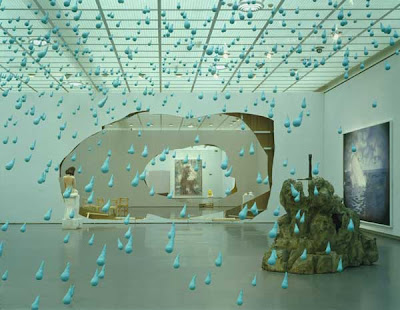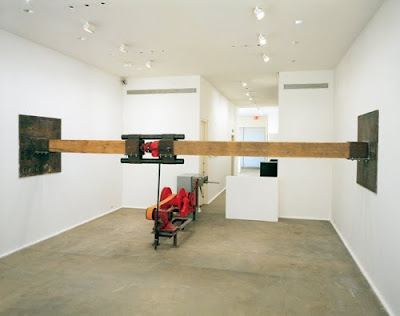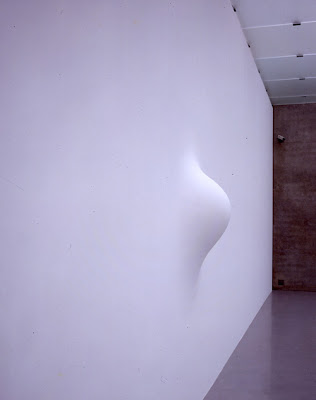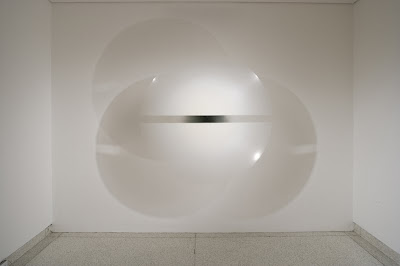ARCHIVES
Post modern tv commercials and methods of gallery interventions
This is another train of thought inspired by a casual conversation with my wife. She was reading me a passage from an introductory anthropology textbook. in the passage there was something about the different ways of ordering a drink in a bar/restaurant so as not to get carded, one of which is ordering by brand rather than item, i think. What I heard and what sent my mind spinning was a passage where someone ordered a “schlitz” which not only dated the book a bit, as did the other language, it also reminded me of those old tv commercials from the 80’s. As a young kid I hadn’t a clue what the product was I just loved seeing the bull burst through the wall. You know the moment when they say “nobody does it like the bull”. The wall bursting bull then made me think about the other iconic wall busting beverage from tv land “kool-aid”. So this is my point of departure. below are the two commercials.(if you are reading this where it has been aggregated like facebook, tumblr or another place you might have to click a link to see the videos, or just bookmark my blog http://blog.jonathanbrilliant.com to see this in it’s original context)
the kool aid commercial is embedded above, if you are viewing this post somewhere other than my blog(aggregated into facebook, tumblr, etc, you will need to click the original post to view the video, or view it on youtube here http://www.youtube.com/watch?v=nBeUGqeYsQg)
this is the bull commercial again if you are not seeing the video view original link or view video on youtube http://www.youtube.com/watch?v=bo0X2KV4tkU&feature=related
 I am not going to delve into fishcer bashing as has become the sport of art enthusiasts in regards to his recent show at the new museum, which i was fortunate enough to see. I am just interested in this gesture of cutting through the wall, and how the bull, and kool-aid pre-figure his strategy. So thinking about urs fischer and his slice of wall leads to the inevitable origins and works his gesture owes to. Case in point Gordon Matta Clarks excavations of buildings pictured below.
I am not going to delve into fishcer bashing as has become the sport of art enthusiasts in regards to his recent show at the new museum, which i was fortunate enough to see. I am just interested in this gesture of cutting through the wall, and how the bull, and kool-aid pre-figure his strategy. So thinking about urs fischer and his slice of wall leads to the inevitable origins and works his gesture owes to. Case in point Gordon Matta Clarks excavations of buildings pictured below. While it would be easy to bash and talk about the derivative nature of Urs Fischer I actually have a great appreciation for the logistics involved in his generally casual and simple ideas. Fischer has enjoyed a brief and active career of high budget simple gestures like excavating the entire floor of a gallery or fabricating absurdly large metal sculptures based on smooshy globs of clay. He is able to dispatch teams of people and financial backers to realize his vision. This task alone, navigating the boards of people who facilitate his work would easily break a lesser artist. For those of us who have worked in galleries, museums or institutions the sheer amount of bureaucratic BS Fischer has to navigate is the highest art going on in his studio. That is not to excuse the often times lack luster results, but hey getting to do what you want, how you want and when you want does not mean you will be universally popular. Unlike Matta-Clark who had limited budgets and helpers for his interventions(I believe it was Matta-Clark and his trusted assistant the Milwaukee Brand Sawz-all, otherwise known as a sculptors best friend.) Fishcher seems to do less with more. I rather like the ideas in Matta-Clarks work as he knew up front that you would probably experience his work through documentation or simply legend. In Matta Clark’s day there was not a tremendous amount of support or funding for his work, none-the-less his wall breaking still holds sway. After following this thought I remembered another work which pushes through the walls of the gallery, literally and conceptually. Below is Chris Burden’s Samson.
While it would be easy to bash and talk about the derivative nature of Urs Fischer I actually have a great appreciation for the logistics involved in his generally casual and simple ideas. Fischer has enjoyed a brief and active career of high budget simple gestures like excavating the entire floor of a gallery or fabricating absurdly large metal sculptures based on smooshy globs of clay. He is able to dispatch teams of people and financial backers to realize his vision. This task alone, navigating the boards of people who facilitate his work would easily break a lesser artist. For those of us who have worked in galleries, museums or institutions the sheer amount of bureaucratic BS Fischer has to navigate is the highest art going on in his studio. That is not to excuse the often times lack luster results, but hey getting to do what you want, how you want and when you want does not mean you will be universally popular. Unlike Matta-Clark who had limited budgets and helpers for his interventions(I believe it was Matta-Clark and his trusted assistant the Milwaukee Brand Sawz-all, otherwise known as a sculptors best friend.) Fishcher seems to do less with more. I rather like the ideas in Matta-Clarks work as he knew up front that you would probably experience his work through documentation or simply legend. In Matta Clark’s day there was not a tremendous amount of support or funding for his work, none-the-less his wall breaking still holds sway. After following this thought I remembered another work which pushes through the walls of the gallery, literally and conceptually. Below is Chris Burden’s Samson. Having only experienced this work through documentation, I can only comment on the ideas and imagine what the actual experience would be like. In the piece the arrival of the viewer through the turn style activates a mechanism which pushes against the gallery walls. This literal act of pushing against the space is the same way that fischer’s and matta-clark’s work pushed through the walls of the space . The one added feature of Burden’s wall work is the inclusion of the viewer activation. By coming to view the work, the viewer activates the piece and hastens the implied destruction of the walls. but there is a catch the whole work is conceptual and the jack within the work is geared in such a way as to limit the pressure exerted on the walls. So again like matta-clark before him burden’s is a work that can exist in the mind of the viewer more than in the actual creation.
Having only experienced this work through documentation, I can only comment on the ideas and imagine what the actual experience would be like. In the piece the arrival of the viewer through the turn style activates a mechanism which pushes against the gallery walls. This literal act of pushing against the space is the same way that fischer’s and matta-clark’s work pushed through the walls of the space . The one added feature of Burden’s wall work is the inclusion of the viewer activation. By coming to view the work, the viewer activates the piece and hastens the implied destruction of the walls. but there is a catch the whole work is conceptual and the jack within the work is geared in such a way as to limit the pressure exerted on the walls. So again like matta-clark before him burden’s is a work that can exist in the mind of the viewer more than in the actual creation. 
so in thinking about the ideas of the walls as the site of the sculpture I though of one of my favorite british artists, Anish Kapoor pictured above. I thought about Kapoor’s pregnant wall piece where rather than excising a mark in the wall or removing the wall all together, as he had done before, he has given life to the wall itself. the simplicity and beauty of the wall growing on it’s own is something that is really quite striking and beautiful to see. The final stop on this train of wall defying images is an older piece by Robert Irwin I saw a few years back. It really is a nice subtle piece that makes a wall come alive.
